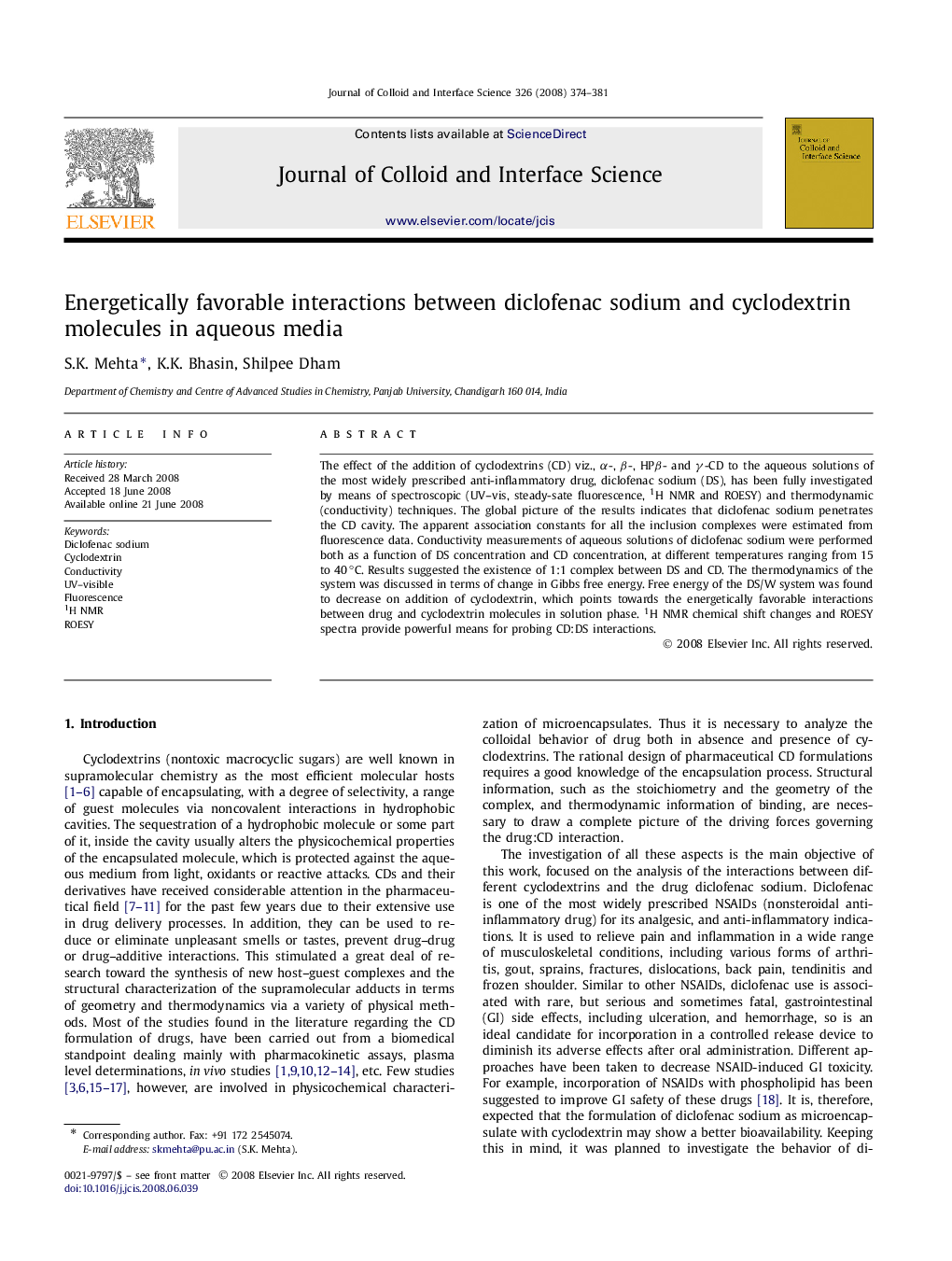| Article ID | Journal | Published Year | Pages | File Type |
|---|---|---|---|---|
| 611327 | Journal of Colloid and Interface Science | 2008 | 8 Pages |
The effect of the addition of cyclodextrins (CD) viz., α-, β-, HPβ- and γ-CD to the aqueous solutions of the most widely prescribed anti-inflammatory drug, diclofenac sodium (DS), has been fully investigated by means of spectroscopic (UV–vis, steady-sate fluorescence, 1H NMR and ROESY) and thermodynamic (conductivity) techniques. The global picture of the results indicates that diclofenac sodium penetrates the CD cavity. The apparent association constants for all the inclusion complexes were estimated from fluorescence data. Conductivity measurements of aqueous solutions of diclofenac sodium were performed both as a function of DS concentration and CD concentration, at different temperatures ranging from 15 to 40 °C. Results suggested the existence of 1:1 complex between DS and CD. The thermodynamics of the system was discussed in terms of change in Gibbs free energy. Free energy of the DS/W system was found to decrease on addition of cyclodextrin, which points towards the energetically favorable interactions between drug and cyclodextrin molecules in solution phase. 1H NMR chemical shift changes and ROESY spectra provide powerful means for probing CD:DS interactions.
Graphical abstractThe inclusion complexes between diclofenac sodium, a nonsteroidal anti-inflammatory drug, and different cyclodextrins were assessed using spectroscopic and thermodynamic studies. Studies confirmed the formation of 1:1 complex in the solution.Figure optionsDownload full-size imageDownload as PowerPoint slide
